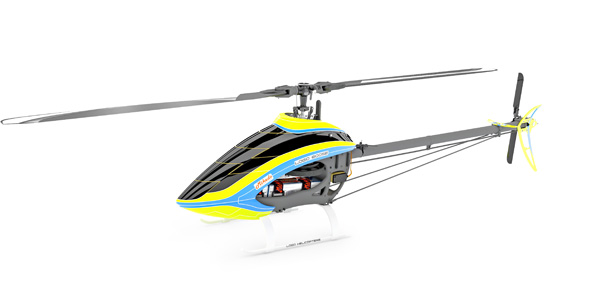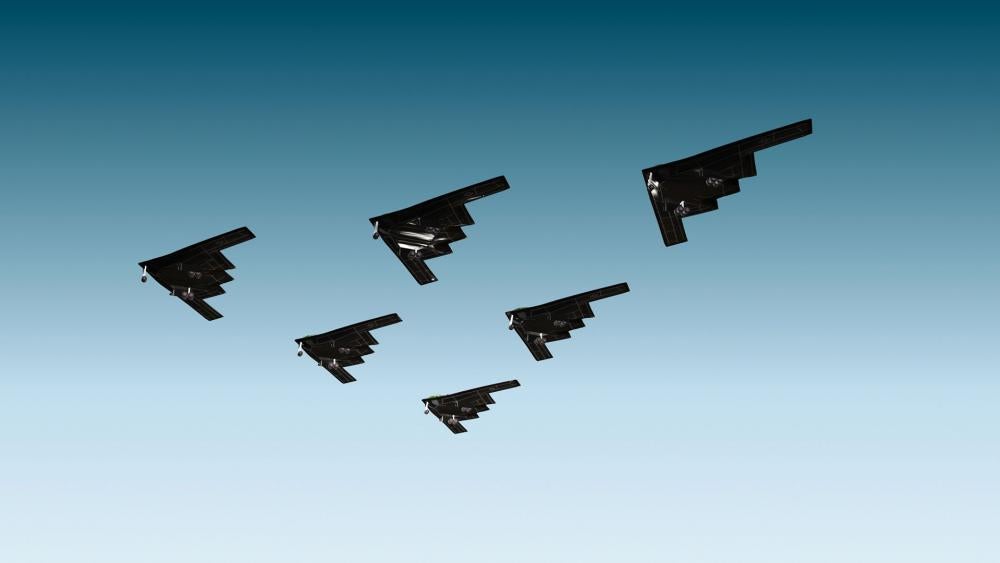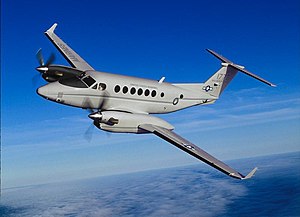-
Making the Brazilian ATR-72 Spin
by
No Comments

Note: This story was corrected on August 10th at 10:23 am, thanks to the help of a sharp-eyed reader.
Making an ATR-72 Spin
I wasn’t in Brazil on Friday afternoon, but I saw the post on Twitter or X (or whatever you call it) showing a Brazil ATR-72, Voepass Airlines flight 2283, rotating in a spin as it plunged to the ground near Sao Paulo from its 17,000-foot cruising altitude. All 61 people aboard perished in the ensuing crash and fire. A timeline from FlightRadar 24 indicates that the fall only lasted about a minute, so the aircraft was clearly out of control. Industry research shows Loss of Control in Flight (LOCI) continues to be responsible for more fatalities worldwide than any other kind of aircraft accident.
The big question is why the crew lost control of this airplane. The ADS-B data from FlightRadar 24 does offer a couple of possible clues. The ATR’s speed declined during the descent rather than increased, which means the aircraft’s wing was probably stalled. The ATR’s airfoil had exceeded its critical angle of attack and lacked sufficient lift to remain airborne. Add to this the rotation observed, and the only answer is a spin.

Can a Large Airplane Spin?
The simple answer is yes. If you induce rotation to almost any aircraft while the wing is stalled, it can spin, even an aircraft as large as the ATR-72. By the way, the largest of the ATR models, the 600, weighs nearly 51,000 pounds.
Of course, investigators will ask why the ATR’s wing was stalled. It could have been related to a failed engine or ice on the wings or tailplane. (more…)
-
How the FAA Let Remote Tower Technology Slip Right Through Its Fingers
by
No Comments
In June 2023, the FAA published a 167-page document outlining the agency’s desire to replace dozens of 40-year-old airport control towers with new environmentally friendly brick-and-mortar structures. These towers are, of course, where hundreds of air traffic controllers ply their trade … ensuring the aircraft within their local airspace are safely separated from each other during landing and takeoff.
The FAA’s report was part of President Biden’s Infrastructure Investment and Jobs Act enacted on November 15, 2021. That bill set aside a whopping $25 billion spread across five years to cover the cost of replacing those aging towers. The agency said it considered a number of alternatives about how to spend that $5 billion each year, rather than on brick and mortar buildings.
One alternative addressed only briefly before rejecting it was a relatively new concept called a Remote Tower, originally created by Saab in Europe in partnership with the Virginia-based VSATSLab Inc. The European technology giant has been successfully running Remote Towers in place of the traditional buildings in Europe for almost 10 years. One of Saab’s more well-known Remote Tower sites is at London City Airport. London also plans to create a virtual backup ATC facility at London Heathrow, the busiest airport in Europe.
A remote tower and its associated technology replace the traditional 60-70 foot glass domed control tower building you might see at your local airport, but it doesn’t eliminate any human air traffic controllers or their roles in keeping aircraft separated.

Max Trescott photo Inside a Remote Tower Operation
In place of a normal control tower building, the airport erects a small steel tower or even an 8-inch diameter pole perhaps 20-40 feet high, similar to a radio or cell phone tower. Dozens of high-definition cameras are attached to the new Remote Tower’s structure, each aimed at an arrival or departure path, as well as various ramps around the airport.
Using HD cameras, controllers can zoom in on any given point within the camera’s range, say an aircraft on final approach. The only way to accomplish that in a control tower today is if the controller picks up a pair of binoculars. The HD cameras also offer infrared capabilities to allow for better-than-human visuals, especially during bad weather or at night.
The next step in constructing a remote tower is locating the control room where the video feeds will terminate. Instead of the round glass room perched atop a standard control tower, imagine a semi-circular room located at ground level. Inside that room, the walls are lined with 14, 55-inch high-definition video screens hung next to each other with the wider portion of the screen running top to bottom.
After connecting the video feeds, the compression technology manages to consolidate 360 degrees of viewing area into a 220-degree spread across the video screens. That creates essentially the same view of the entire airport that a controller would normally see out the windows of the tower cab without the need to move their head more than 220 degrees. Another Remote Tower benefit is that each aircraft within visual range can be tagged with that aircraft’s tail number, just as it might if the controller were looking at a radar screen. (more…)
-
Aviation Records Note Seasonal Transitions
by
No Comments
 For many, Florida’s Sun & Fun fly-in announces the commencement of flying season in every new year. A better transition from one flying year to the next is the National Aeronautic Association’s springtime announcement of the previous year’s most memorable aviation records.
For many, Florida’s Sun & Fun fly-in announces the commencement of flying season in every new year. A better transition from one flying year to the next is the National Aeronautic Association’s springtime announcement of the previous year’s most memorable aviation records.What makes them so eagerly anticipated are the unpredictability of their number and the focus of their accomplishments. Perhaps more importantly, they highlight the rewarding diversity aviation bestows on those who invest their lives in it. There is no better example of this than The Most Memorable Aviation Records of 2018.
The first two memorable records cover the spectrum of fixed-wing aviation, the speed of a glider over a 500-kilometer out-and-back course—158.3 mph—and the speed of a business jet—631.80 mph—over a recognized course, Seville, Spain, to Abu Dhabi, UAE.
/https://public-media.si-cdn.com/filer/fd/a9/fda928ee-7566-4e14-b9b5-56330d7c0dba/24a_aug2018_timetoclimbrecordframe127_live.jpg) And how did I not hear about Daniel Gray setting a new C-1b time-to-climb record in a Harmon Rocket IIA powered by a 650-hp rotary engine? From a standing start in Oxnard, California, he needed less than 100 seconds to reach 3,000 meters, or 9,843 feet, and beat Elliot Seguin’s old record of 1 minute, 59.5 seconds.
And how did I not hear about Daniel Gray setting a new C-1b time-to-climb record in a Harmon Rocket IIA powered by a 650-hp rotary engine? From a standing start in Oxnard, California, he needed less than 100 seconds to reach 3,000 meters, or 9,843 feet, and beat Elliot Seguin’s old record of 1 minute, 59.5 seconds.Google provided just two stories on the record, one a post on Van’s Air Force, and another on Digrantrara.com, which revealed at the end of the page, that it had copied from Air&Space (and I wonder why Google didn’t lead me to this story in the first place). This effort is certainly on my learn-more list. Who would have imagined a new record powered by a twin-rotor Mazda rotary engine mated to the tail rotor drive of a Bell 47 helicopter?
The absolute altitude record of 74,334 feet the engineless Perlan 2 set last September over Argentina didn’t slip by me. One wonders, will be 2019 be the year this record-setting glider achieves its 100,000-foot goal?
It is this unpredictability that makes each spring’s record announcements like Christmas (either early or late, depending on your predilection). Learning that there exists a record Class G-2 for vertical formation skydiving is much better than getting a pair of racy socks. And how do you measure the preparation and discipline it takes for 42 jumpers to rearrange themselves in four sequential formations while falling to earth head down?
 And sometimes you get what might be a peek at the future. Last July, John McNeil set a distance goal and return for a remote control model and set a record of 33.9 miles, bettering the old record of 31 miles. Some may snigger at a record set by an RC model, but what might this Logo 600SE electric-powered helicopter have to offer those working on full-scale electric flying machines? — Scott Spangler, Editor
And sometimes you get what might be a peek at the future. Last July, John McNeil set a distance goal and return for a remote control model and set a record of 33.9 miles, bettering the old record of 31 miles. Some may snigger at a record set by an RC model, but what might this Logo 600SE electric-powered helicopter have to offer those working on full-scale electric flying machines? — Scott Spangler, Editor -
Translating The 737 MAX 8 Crisis
by
No Comments
I rather fancy myself as a translator of aviation speak, trying to be sure people who read about our industry really understand what I’m trying to explain, whether that’s in print or online.
 The past few weeks have been a nightmare for most journalists trying to explain the intricacies of the 737 MAX 8 & 9’s Maneuvering Characteristic Augmentation System, or MCAS.
The past few weeks have been a nightmare for most journalists trying to explain the intricacies of the 737 MAX 8 & 9’s Maneuvering Characteristic Augmentation System, or MCAS.Because of the weight and the placement of the new CFM International LEAP-1B engines added to create the MAX, the nose of the aircraft could pitch up more than most pilots might expect when power was added, especially at low speeds, like those experienced during takeoff.
Today I just read that the Ethiopian airplane was less than 1,000 feet above the ground when the MCAS apparently fired and wrestled control of the aircraft away from the pilots with obviously disastrous results. That wouldn’t have given them much time to react.
Right now, there’s little to be gained by explaining what the Ethiopian pilots should have done or what they should have known in order to maintain control of the airplane. Boeing certainly didn’t help the situation initially by not telling pilots the MCAS even existed. After the Lion Air accident, Boeing did publish a bulletin explaining that an MCAS upset could look very much like a trim runaway. Whether or not the Ethiopian crew saw the bulletin is anyone’s guess. If they did read it, why they were not able to disable the trim is another question we’ll need to wait for the final accident report to explain.
 Since the Ethiopian accident, I’ve been asked more than a few times to provide some context to this saga, a context that non-industry people would understand. I spent some time yesterday with Mary Harris of Slate.com’s “What Next,” podcast for just that reason and I wanted to share it with you. I thought Mary asked some really insightful questions. Hopefully, I offered a few insightful answers as well.
Since the Ethiopian accident, I’ve been asked more than a few times to provide some context to this saga, a context that non-industry people would understand. I spent some time yesterday with Mary Harris of Slate.com’s “What Next,” podcast for just that reason and I wanted to share it with you. I thought Mary asked some really insightful questions. Hopefully, I offered a few insightful answers as well.To listen to Slate.com’s What Next podcast for March 29, 2019, click here. @slate
Rob
-
DoD Aircraft Rental: Stick Time Not Included
by
No Comments
 Anyone who has investigated becoming a pilot knows that aviation is sold by the flight hour. Anyone who’s ever rented one should find this interesting: the Fiscal Year 2019 Department of Defense Fixed-Wing and Helicopter Reimbursement Rates for the Air Force, Army, and Navy.
Anyone who has investigated becoming a pilot knows that aviation is sold by the flight hour. Anyone who’s ever rented one should find this interesting: the Fiscal Year 2019 Department of Defense Fixed-Wing and Helicopter Reimbursement Rates for the Air Force, Army, and Navy.“When determining the hourly rate, agencies should utilize the appropriate rate category.” They are, Other DoD, Other Federal, Foreign Military Sales, and All Other. Civilian use, such as movie making and the like, would be All Other. Unfortunately, the document makes no mention of stick time, but I imagine that’s not the case for Foreign Military Sales, where the hourly rate would be for demo flights?
 Like all rentable aircraft, I’m sure the DoD computed the hourly fees by summing the airplane’s operating and fixed costs such as fuel, scheduled maintenance, and engine and system overhaul funds, added the cost of human resources, the people who fly and maintain the aircraft, and divided that number by however many hours they expected to rent each aircraft every year.
Like all rentable aircraft, I’m sure the DoD computed the hourly fees by summing the airplane’s operating and fixed costs such as fuel, scheduled maintenance, and engine and system overhaul funds, added the cost of human resources, the people who fly and maintain the aircraft, and divided that number by however many hours they expected to rent each aircraft every year.What’s interesting in paging through the document is guessing at the contribution of each factor for the (All Other User) hourly rate. Among Air Force bombers, the B-2 goes for $62,012 an hour. That’s roughly $10K more than the B-1 ($51,475) and nearly double the B-52’s $33,919. This explains why the B-52 continues to serve, and it makes one wonder what the hourly rate will be for the B-2’s replacement, assuming there is a B-21.
A good guess would be that it is nowhere close to the hourly difference for the Navy’s long serving patrol plane, the Lockheed Electra-based P-3 Orion, which rents for (All Other Users) $9,015 an hour, and its replacement, the Boeing 737-based Poseidon, which goes for $9,928 an hour.
 There seems to be only one aircraft, the Beech Super King Air-based C-12 Huron, in service with all four branches of the U.S. Military. (Given their special relationship, Marine aircraft, like the AV-8 Harrier, $13,768 an hour, are listed with the Navy’s birds.) The Army rents its C-12 to All Other Users for $2,226 an hour. The Navy/Marines rents their UC-12-Ws for $2,497 an hour. The Air Force rents its C-12C for $3,341, its C-12F and C-12J for $$3,350.
There seems to be only one aircraft, the Beech Super King Air-based C-12 Huron, in service with all four branches of the U.S. Military. (Given their special relationship, Marine aircraft, like the AV-8 Harrier, $13,768 an hour, are listed with the Navy’s birds.) The Army rents its C-12 to All Other Users for $2,226 an hour. The Navy/Marines rents their UC-12-Ws for $2,497 an hour. The Air Force rents its C-12C for $3,341, its C-12F and C-12J for $$3,350.The cheapest aircraft on the list is the T-6 Texan, the winged classroom used in Air Force and Navy primary flight training. The Air Force rents its T-6A for $917 an hour. The Navy rents its T-6A for $1,877 and its T-6B for $1,839. It’s interesting that the B-model with its glass, HUD, and Hands on Throttle and Stick cockpit rents for the lower amounts. Another question is why the Navy’s T-6’s rent for almost double the rate of the Air Force. Is it because the Air Force flairs to land and the Navy planes, given their carrier heritage, arrive?
 The document’s final tables may provide a clue. They subdivide the total hourly rental into O&M (Operations and Maintenance), MilPers (military personnel involved with operations and maintenance), and Utl (asset utilization fee). It costs the Navy $1,621 an hour to operate and maintain its T-6A; it costs the Air Force just $794. The Air Force also charges a lower utilization fee, $34 per hour to the Navy’s $72. Finally, it seems that either the Air Force pays its personnel less, or there are fewer personnel involved. The Air Force charge is $88 an hour to the Navy’s $184.
The document’s final tables may provide a clue. They subdivide the total hourly rental into O&M (Operations and Maintenance), MilPers (military personnel involved with operations and maintenance), and Utl (asset utilization fee). It costs the Navy $1,621 an hour to operate and maintain its T-6A; it costs the Air Force just $794. The Air Force also charges a lower utilization fee, $34 per hour to the Navy’s $72. Finally, it seems that either the Air Force pays its personnel less, or there are fewer personnel involved. The Air Force charge is $88 an hour to the Navy’s $184.With a small loan and not going out to dinner for the rest of my life, it might be nice to rent one or two of the military’s fleet for an hour, if only the rental came with some stick time. — Scott Spangler, Editor



